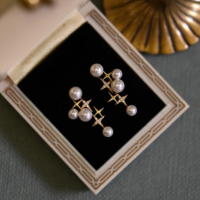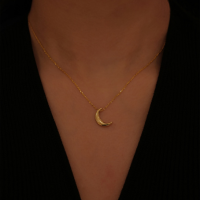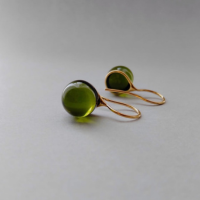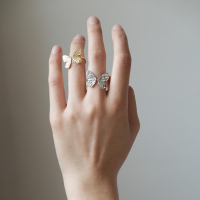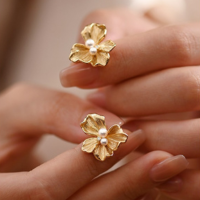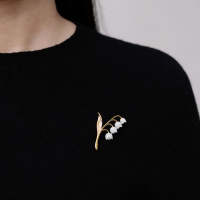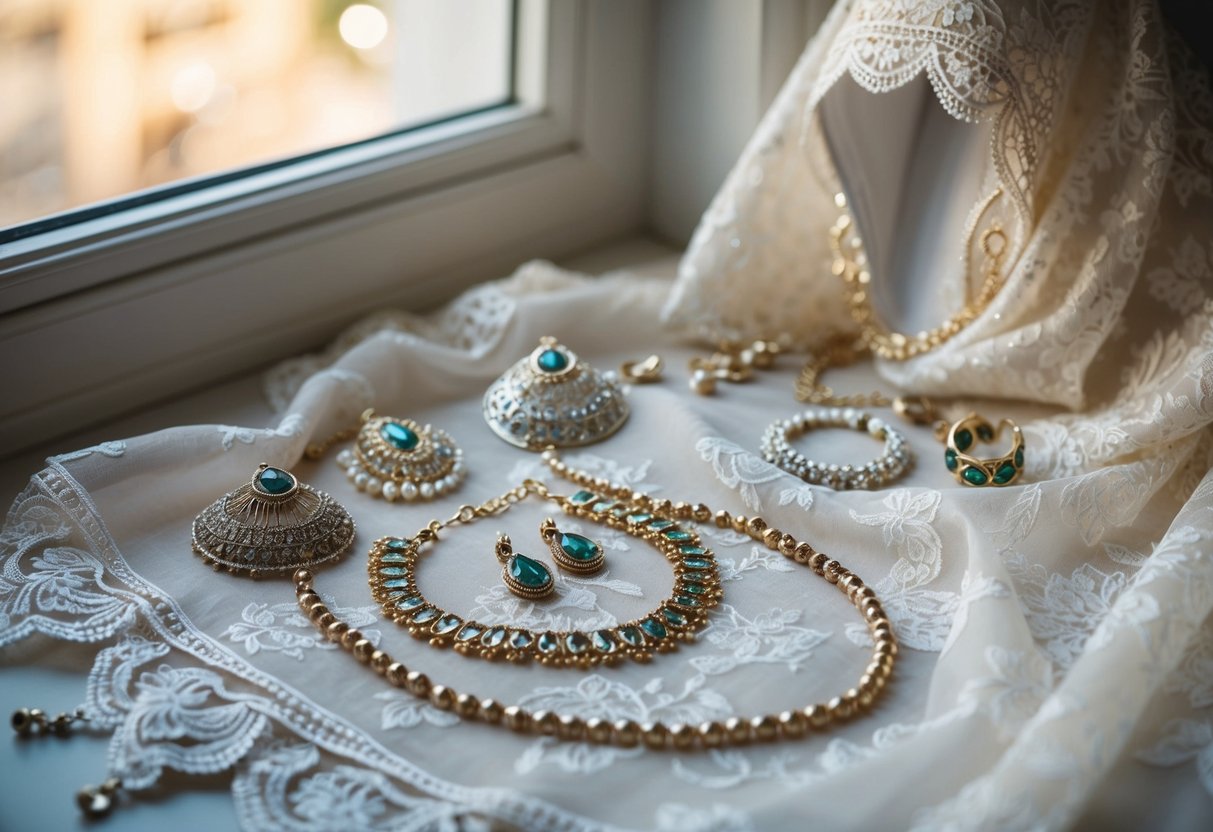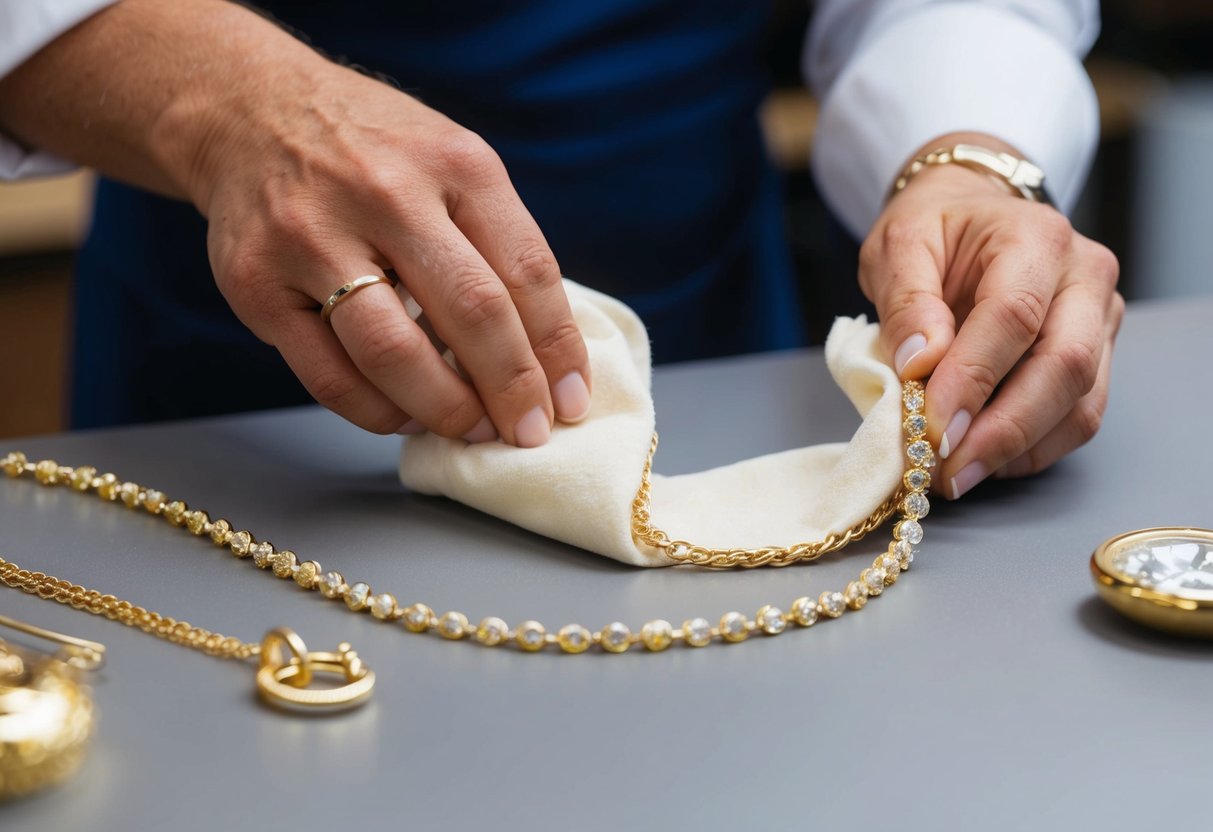
How to Clean White Gold Jewelry
Check out our personalized jewelry collections! (kids drawing jewelry, coin jewelry, wire jewelry, fingerprint jewelry, handwriting jewelry, and more)
White gold jewelry sparkles in its simplicity and elegance. With time, though, it can lose its shine due to dirt and wear. To keep our beloved pieces looking their best, it's essential to clean them properly. This task doesn't require a professional; we can do it ourselves at home.
White gold needs the right touch to maintain its shine. Our jewelry deserves gentle care to prevent damage. Simple household items can help restore its sparkle without causing harm. Using the right methods ensures our jewelry stays beautiful and lasts longer.
Let’s embrace the joy of wearing brilliantly polished jewelry. Caring for our white gold not only enhances its beauty but also allows us to enjoy wearing it for many more occasions. Follow our simple steps to revitalize your cherished pieces.
Key Takeaways
- Proper cleaning keeps jewelry shiny and beautiful.
- Simple household items can be used for cleaning.
- Regular care prevents damage and extends jewelry life.
Understanding White Gold
White gold is a popular choice for jewelry lovers due to its elegant appearance and durability. It's important to know what white gold is made of and how different alloys affect its look and feel.
Composition of White Gold
White gold is not pure gold. Instead, it's a blend of pure gold and other white metals like palladium or nickel. These metals give white gold its unique shiny white color. Pure gold, which is yellow, needs these alloys to change its color.
Karat is a term we use to describe the amount of pure gold in white gold. For example, 18k white gold has 75% gold. The rest is made up of other metals. Knowing karats and alloys helps us choose the right piece for style and durability.
White Gold Alloys
White gold alloys are essential in altering its color and strength. Different metals create different results. Nickel is common but can cause allergies for some people. An alternative is palladium, which is hypoallergenic.
Palladium makes white gold more expensive, but it's a safe choice for sensitive skin. Rhodium is often used to coat white gold, giving an extra shiny finish. Over time, this coating may wear off, so re-plating might be necessary.
When shopping, consider the alloy used to ensure comfort and longevity in our jewelry. Different alloys offer varied benefits and can impact the price and wearability of the piece.
Before You Start
Preparing to clean white gold jewelry involves a few steps. Knowing the finish type and gathering the right supplies is essential for the best results.
Identify Your Jewelry's Finish
First, let's take a look at our jewelry. White gold can have different finishes. Some are rhodium plated, giving a bright, shiny appearance. Others might have a satin or matte look.
Recognizing the finish tells us how to clean it properly. It’s important because rhodium plating can be sensitive. Improper cleaning can scratch or wear it away.
A magnifying glass can help. Look for makers' marks on the jewelry, which might give clues about the finish. When in doubt, contacting the jeweler for information can be a good idea.
Collect Necessary Supplies
Gathering the right supplies ensures cleaning goes smoothly. We’ll need mild soap, a soft cloth, a small bowl, and clean water—preferably warm.
Make sure the soap is gentle, like a baby shampoo or dish soap. Avoid anything harsh or with chemicals. Keep a soft brush handy, like an old toothbrush. It's useful for getting into small areas.
Lastly, have a dry, lint-free cloth ready for drying the jewelry. Avoid paper towels or tissues, which might scratch. With these supplies, we'll be ready to clean safely and effectively.
Routine Cleaning Process
To keep our white gold jewelry sparkling, we must clean it regularly. This process involves preparing a mild cleaning solution, soaking the jewelry, gently scrubbing difficult spots, and thoroughly rinsing and drying the pieces.
Preparing the Cleaning Solution
Begin by gathering materials for the cleaning solution. We need a small bowl, mild dish soap, and warm water. Warm water helps dissolve dirt and grime without harming the gold.
Mix a few drops of mild dish soap with warm water in the bowl. Stir the solution gently until it becomes sudsy. This solution is safe for our jewelry because it's neither too harsh nor too abrasive.
There's no need for special jewelry cleaners. For routine cleaning, this simple solution is both effective and gentle.
Soaking White Gold Jewelry
Once the solution is ready, we can begin soaking our jewelry. Place each piece carefully in the bowl. Ensure the pieces are fully submerged in the soapy water.
Leave them to soak for about 15-20 minutes. This soak gives our solution enough time to loosen any dirt or buildup.
Avoid soaking for too long to protect any stones or embellishments. While the gold is sturdy, extended exposure can weaken softer materials.
Gentle Scrubbing Techniques
After soaking, we move to scrubbing. Use a soft-bristled toothbrush for this task. A soft brush won’t scratch our jewelry, keeping it looking pristine.
Gently scrub the jewelry, focusing on crevices or places where dirt accumulates. Pay particular attention to detailed areas, like engravings or under any stones.
Don’t apply too much pressure. A light touch is often enough to remove grime without causing damage or wear.
Rinsing and Drying
Rinse our jewelry under lukewarm water once scrubbing is complete. Make sure there’s no soap residue left.
Hold the jewelry securely and let the water run through any settings or hard-to-reach spots. It ensures no soap remains and prevents future deposits.
After rinsing, lay the pieces on a soft, clean cloth. Gently pat them dry and leave them to air dry completely. Ensure they’re fully dry before storing to prevent tarnishing or residue buildup.
Deep Cleaning for Tarnish Removal
Caring for white gold jewelry is essential to keep it gleaming. We’ll cover when you might need a professional cleaner and how to effectively use baking soda and vinegar at home.
When to Opt for Professional Cleaning
Our beloved white gold pieces sometimes demand professional attention. If the tarnish is stubborn, professional cleaning can be necessary. Jewelers have the tools and expertise to handle delicate items without risking damage. While at-home cleaning works for mild tarnish, professionals offer thorough treatment, using ultrasonic cleaners or steam to reach crevices.
We suggest professional help for valuable or sentimental items. Cleaning methods at a jeweler's shop are also ideal for jewelry with gemstones. They ensure each piece is handled with care and precision, preserving its beauty and longevity.
Using Baking Soda and Vinegar
For at-home cleaning, we can use a simple baking soda and vinegar mix to fight tarnish. Begin by mixing two tablespoons of baking soda with a half cup of vinegar in a bowl. Stir until it forms a paste.
Apply the paste to the jewelry using a soft brush or cloth. Gently scrub to remove tarnish. For intricate designs, a toothbrush is ideal.
Rinse thoroughly with warm water, making sure to remove all paste. Dry the jewelry with a soft cloth, ensuring no moisture remains. This method is effective for mild tarnish, bringing back the shine without harm. Always test on a small area first to prevent any unexpected reactions.
Caring for White Gold Jewelry Daily
Taking care of white gold jewelry means being mindful of how we handle, store, and avoid exposing it to harsh chemicals. These practices help maintain its shine and quality over time.
Avoiding Chemical Exposure
Chemicals in our daily lives can harm white gold jewelry. It’s best to remove rings, bracelets, and necklaces when cleaning or using products like perfumes, lotions, and hair sprays. Household cleaning products can tarnish and damage the finish.
Chlorine is particularly harsh. When swimming in pools, we should store our jewelry in a safe place. Even the remnants of chemicals on our hands can dull the appearance over time. Keeping cleaning wipes or a soft cloth nearby can help us quickly remove any unwanted residues.
Storage Tips and Tricks
Proper storage is key to protecting our white gold jewelry. We recommend using a jewelry box with separate compartments. This prevents pieces from scratching each other.
Soft pouches are also a great option for extra protection. Keep these pouches in cool, dry places away from direct sunlight. Humidity can cause discoloration over time. It’s helpful to regularly inspect our storage spaces to ensure they remain ideal for preserving our valuable pieces.
White Gold Maintenance Tips
Maintaining white gold jewelry keeps it stunning and long-lasting. We will discuss the significance of regular inspections and the benefits of professional polishing and rhodium plating.
Regular Inspections
To keep white gold jewelry in great condition, we should perform regular inspections. Carefully examine each piece for loose settings or worn-out clasps. It's essential to catch these early to prevent further damage.
A jeweler's loupe can help us spot tiny imperfections. Also, checking for bent prongs is key. Bent prongs may lead to losing precious stones.
Inspecting jewelry every few months helps ensure it remains secure and beautiful. We recommend creating a routine. Set a reminder on your phone or calendar to help keep track. Regular inspections ensure we address small issues before they become big problems.
Professional Polishing and Rhodium Plating
Professional services are invaluable for maintaining white gold. Over time, white gold can lose its luster due to everyday wear. Polishing restores its beautiful shine. A professional jeweler will use special tools to polish without damaging the piece.
Besides polishing, rhodium plating helps retain the shiny white finish. Rhodium is a highly reflective metal. Jewelers coat white gold with rhodium to protect it. This plating can wear off after a while, so it's a good idea to have it reapplied every couple of years.
Regular professional care keeps our white gold jewelry looking pristine. With these steps, we ensure our jewelry remains in excellent condition.
Frequently Asked Questions
White gold jewelry can lose its luster over time. We answer questions about restoring shine, using household items for cleaning, and safe practices for jewelry with diamonds.
What is the best method to restore shine to white gold jewelry?
Polishing with a soft cloth and mild soap can help restore the shine. Rinse thoroughly with water and dry carefully to prevent water spots.
Can I use household items like vinegar for cleaning white gold jewelry?
It's best to avoid vinegar as it might be too harsh. Instead, use mild soap and water, which are safer for maintaining the finish.
What are the safe ways to clean white gold jewelry with set diamonds?
Use a mixture of warm water and a few drops of mild dish soap. Gently scrub around the diamonds with a soft toothbrush, taking care not to scratch the setting.
Why does my white gold jewelry look yellow, and how can I clean it?
White gold can yellow over time due to the rhodium plating wearing off. Proper cleaning with mild soap may help, but re-plating by a jeweler might be necessary for full restoration.
How can I clean discolored white gold that has blackened over time?
A jewelry-specific cleaner can help with blackened areas. Avoid harsh chemicals and opt for a gentle solution to maintain the integrity of the metal.
What are the most effective cleaning solutions specifically for white gold?
We recommend using professional jewelry cleaners designed for white gold. Follow the product instructions to ensure safe and effective cleaning.

